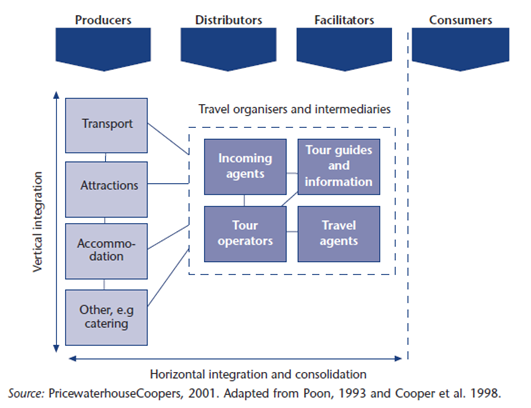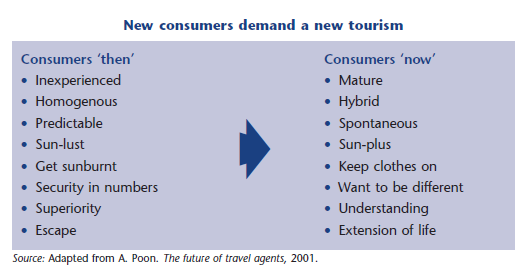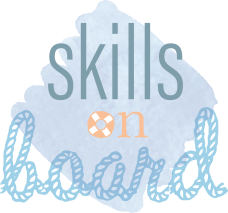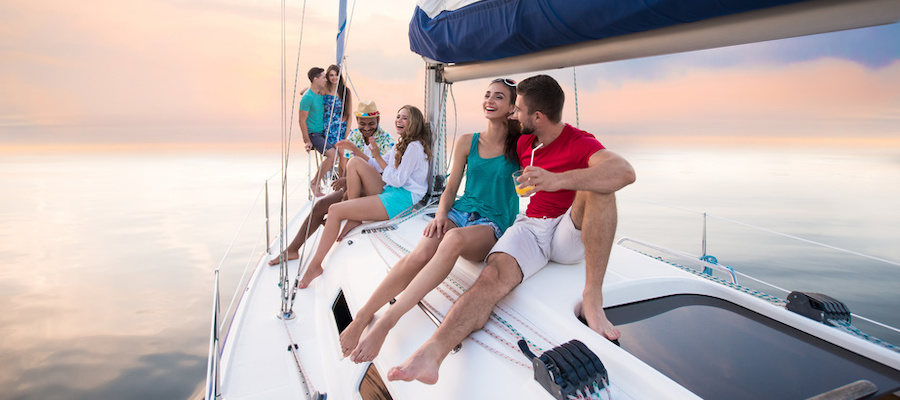SkillsOnBoard Partnership Meeting
November 17, 2019Module 2 The skipper profile
November 21, 2019Module 1 The new touristic profiles
What is addressed in this module
This module introduces skippers to the new tourists’ profile. The characteristics of the traditional, old fashioned tourist are presented initially, including the main purposes of travelling. Next, the differences between the old/traditional tourist and the “new” tourist are presented in comparison to one another. Finally, the factors that affect the current tourists’ choices are presented.This module is addressing the following:
- Tourists’ profiles
- Tourists’ preferences
- Parties involved in tourism services
- Factors affecting tourists’ destinations
Learning objectives
By the end of this module the skipper will be able to:
- Understand the new trends in tourism
- List the factors that affect tourists’ choices
- Better understand the parties involved in the tourism business
Traditional Tourist
A tourist is a person that travels in places that are located outside of his/her everyday environment for short time periods of time for either Personal or Business/Professional purposes.
The business/Professional tourist normally is an employee or a self – employed person that travels in order to participate in a series of professional events such as exhibitions, conferences, demonstrations and other business commitments.
The non-Business/Professional tourist is a person that travels in order to fulfill one or more of the following:
- leisure and recreations such as:
- sight-seeing
- cruising
- yachting
- resting
- participating in social events and activities
- spa and other recreational and entertainment activities
- culture such as:
- visits to museums
- visits to art galleries
- visits to historical monuments
- education and training such as:
- professional and other special courses
- University sabbatical leaves etc.
- short courses
- on the job training
- visiting friends and family members such as:
- attending weddings and other family events
- to care sick and old family members for a short period of time
- to visit friends and relatives
- health and medical care such as:
- receiving services from hospitals, clinics, convalescent homes and, more
- generally includes, health and social institutions,
- visiting health and spa resorts and other specialized places to receive medical
- treatments based on medical advice, including cosmetic surgeries
- religion, such as the attendance of:
- meetings
- events
- pilgrimages
- shopping such as:
- local arts and crafts and printed materials
- souvenirs to display at home which often carry the logo of the visited destination
- Souvenirs associated with either
- outdoor activities or
- Souvenir shops
Tourism is ranked among the major global industries affecting the global economic growth. In diagram 1 the main parties involved in the tourism industry are briefly presented. According to this diagram the “Consumers”, i.e. tourists use the travel organizers and all travel intermediaries (distributors and facilitators), in order to reach the industry’s products such as Accommodation, Attractions, Transportation means that are offered internationally and locally by the “Producers”. In order to better understand the tourism market, the “Consumers” demand for tourist services that are provided – supplied in economic terms – by the “Producers” and offered in an organized form (i.e. market) mainly by the Intermediaries, i.e. the tour operators, tour and incoming agents that use all available resources such as internet, tour guides etc.

DIAGRAM 1
New Vs Old Tourist Characteristics
Socioeconomic sciences support that all consumers, or in other words, tourists, make their selections in order to maximize their individual utility – satisfaction taking into account all the available choices in the market. As a result, tourists explore their options based on the information provided and select the best available choice according to their individual restrictions – constrains, such as budget and time availability.
In the past, tourists used to be inexperienced using tourist services sporadically with homogenous activities as far as their choices are concerned. Their main travel destinations used to be in sunny areas with luxury services followed by a superior touristic behavior. The majority of these tourists were trying to escape from the daily routine by spending their time relaxing and unwinding.
Nowadays, tourists have become more experienced and are considered to be mature customers for the international tourism industry. Normally, they try to combine different types of touristic activities, such as sightseeing and relaxation, culture and training, etc. Their choices are spontaneous and want to differ from the mass. They use touristic activities not as an escape from their daily routine (e.g. break) but as an extension of their lives.
The following table summarizes the differences between tourists as they used to be and what they are today:

Diagram 2
Factors that affect tourists’ destinations
Khuong and Ngauyen (2017) categorize the factors that affect Tourist choices based on their satisfaction.
- Tourist Destination Satisfaction
Tourist destination satisfaction is the satisfaction that tourists have from visiting a destination. The more satisfied tourists are, the more the budget is spent. The main parameters that affect their satisfaction are: the image of the destination, the quality of services perceived and the cost of the services provided.
- Cultural and Historical Attractions
These include the arts (modern and historical), the customs and the habits that characterize the area visited.
- Local Cuisine
Local cuisine acts as an extension to the overall experience perceived in a destination. As a result, in a growing area the local cuisine is now considered to be as a differentiation factor among different destinations.
- Perceived Price
The price that the tourist pays in exchange for the services and the products that they buy/consume at the destination visit.
- Safety and Security
Safety and security, from the tourists’ point of view is considered to be the protection that they expect to have by the local and national authorities and the health services that will be provided in a case of an incident.
- Natural Environment
The characteristics of the nature of the destination, which might have been or not caused/affected by humans.
- Entertainment and Recreation Activities
Entertainment and recreation activities are related to leisure such as theaters, films, music etc. that are available during the tourists’ visit.
- Negative Attributes
These are things that may dissatisfy tourists and will have a negative impact on their perceptions for the destination visited.
- Destination Image
Destination image consists of an individual belief in representation of destination knowledge, feelings toward destination and worldwide impressions about an object.
References
Cosic Maja, Milenko D. Djuric, 2010, RELATIONSHIP MARKETING RELATIONSHIP MARKETING, UTMS Journal of Economics, Vol. 1, No. 1, pp. 53-60, 2010
EUROPEAN COMMISSION, 203, Structure, performance and competitiveness of European tourism and its enterprises, European Communities, 2003 ISBN 92-894-4464-9
Francisco Amaral, Teresa Tiago, Flávio Tiago, 2014, User-generated content: tourists’ profiles on TripAdvisor, International Journal on Strategic Innovative Marketing, DOI: 10.15556/IJSIM.01.03.002
Hjalager Anne-Mette, 2007, STAGES IN THE ECONOMIC GLOBALIZATION OF TOURISM, Annals of Tourism Research, Vol. 34, No. 2, pp. 437–457, 2007, doi:10.1016/j.annals.2006.10.006
Khuong Mai Ngoc and Pham Anh Nguyen, 2017, Factors Affecting Tourist Destination Satisfaction and Return Intention – A Study in Ho Chi Minh City, Vietnam, Journal of Economics, Business and Management, Vol. 5, No. 2, February 2017
Sariisik Mehmet, Oguz Turkay, Orhan Akova, 2014, How to manage yacht tourism in Turkey: A swot analysis and related strategies, 7th International Strategic Management Conference
Seddighi H.R., A.L. Theocharous, 2002, A model of tourism destination choice: a theoretical and empirical analysis, Tourism Management 23 475–487
Statistics Department Montserrat, 2013, CLASSIFICATION OF TOURISM PURPOSES, United Nations Regional Workshop on Travel and Tourism Statistics, Roseau, Dominica, 14-17 May 2013






